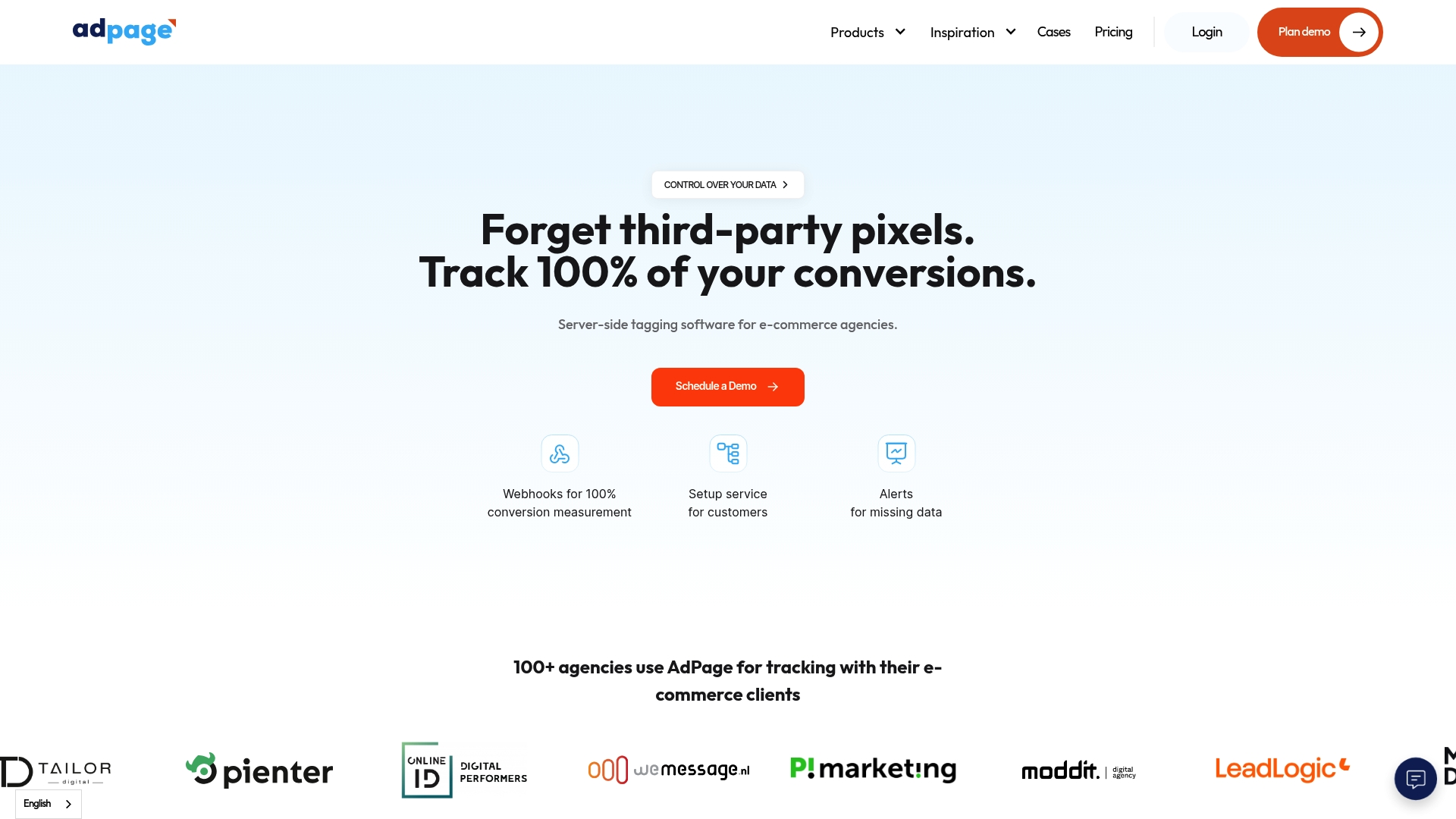Most online stores convert fewer than 3 out of every 100 visitors into customers. That means the smallest improvements in user experience or tracking accuracy can have a big impact on sales. Understanding e-commerce conversion optimization is key for businesses looking to turn browsers into buyers. This guide breaks down proven strategies, smart tracking methods, and actionable tips to help you boost your conversion rates and grow revenue.
Table of Contents
- Defining E-Commerce Conversion Optimization
- Types of Conversion Tracking Methods
- How Server-Side Tagging Enhances Accuracy
- Key Strategies to Maximize Conversions
- Consent Management and Data Compliance Essentials
- Avoiding Common Conversion Tracking Pitfalls
Key Takeaways
| Point | Details |
|---|---|
| E-Commerce Conversion Optimization | This process enhances online stores’ ability to convert visitors into customers through strategic user experience improvements. |
| Types of Conversion Tracking | Utilizing methods like pixel-based and server-side tracking enables businesses to capture user interactions that lead to purchases effectively. |
| Server-Side Tagging Advantages | This approach enhances data accuracy, privacy compliance, and reliability by processing tracking via secure server environments. |
| Common Conversion Pitfalls | Businesses should avoid incomplete data collection and over-reliance on single metrics to ensure robust conversion tracking strategies. |
Defining E-Commerce Conversion Optimization
E-commerce conversion optimization is the strategic process of systematically improving an online store’s ability to transform website visitors into paying customers. According to research from SpringerLink, this involves creating a comprehensive framework designed to incrementally increase digital sales performance through targeted user experience enhancements.
At its core, conversion optimization focuses on understanding and analyzing user interactions throughout the entire digital shopping journey. The arXiv research highlights that successful optimization requires a holistic approach examining multiple interaction points, including:
- Website design and navigation
- Product page presentation
- Checkout process efficiency
- User experience flow
- Mobile responsiveness
- Trust signals and credibility indicators
Understanding conversion optimization means recognizing it as more than just a technical exercise. It is a data-driven strategy that combines psychology, user experience design, and analytical insights to create a seamless path from initial website visit to completed purchase. Successful e-commerce brands continuously test, measure, and refine their digital touchpoints to reduce friction and enhance the likelihood of converting potential customers into actual buyers.
The ultimate goal of conversion rate optimization is not simply increasing traffic, but transforming existing traffic into meaningful revenue by creating an intuitive, compelling, and trustworthy online shopping experience that meets and exceeds customer expectations.
Types of Conversion Tracking Methods
Conversion tracking in e-commerce encompasses multiple sophisticated methodologies designed to capture and analyze user interactions that ultimately lead to successful purchases. ArXiv research highlights the critical importance of understanding different tracking objectives, particularly comparing metrics like click-through rates (CTR) and direct conversion rates to optimize digital retail performance.
The primary types of conversion tracking methods include:
- Pixel-Based Tracking: Uses small JavaScript code snippets embedded on web pages to monitor user actions
- Server-Side Tracking: Captures conversion data directly through backend systems
- Cookie-Based Tracking: Utilizes browser cookies to track user journeys across websites
- Event-Based Tracking: Monitors specific user interactions like button clicks, form submissions, and product views
According to ArXiv research on Multi-Objective Hyperparameter Optimization, advanced tracking methods now focus on developing comprehensive frameworks that simultaneously optimize user engagement and conversion potential. These sophisticated approaches go beyond simple measurement, enabling businesses to create more nuanced, responsive tracking strategies that adapt to complex user behaviors.
Modern conversion tracking is not just about collecting data, but understanding the intricate pathways users navigate before making a purchase. By leveraging multiple tracking methods and integrating advanced analytical tools, e-commerce businesses can gain deep insights into customer behavior, preferences, and potential friction points in the purchasing journey.
 For those seeking a deeper understanding, our conversion tracking explained guide offers comprehensive insights into implementing these sophisticated tracking methodologies.
For those seeking a deeper understanding, our conversion tracking explained guide offers comprehensive insights into implementing these sophisticated tracking methodologies.
How Server-Side Tagging Enhances Accuracy
Server-side tagging represents a transformative approach to conversion tracking that dramatically improves data accuracy and reliability for e-commerce businesses. ArXiv research emphasizes the critical importance of developing sophisticated tracking frameworks that can optimize user engagement and conversion potential through more precise data collection methodologies.
Key advantages of server-side tagging include:
- Reduced Data Loss: Captures conversion events directly through backend systems
- Enhanced Privacy Compliance: Minimizes reliance on client-side tracking methods
- Improved Performance: Reduces website loading times by processing tracking server-side
- Greater Tracking Reliability: Eliminates issues related to browser-based tracking limitations
- Advanced User Identification: Enables more comprehensive tracking across multiple devices and platforms
According to ArXiv research on e-commerce retrieval systems, modern tracking approaches must go beyond traditional metrics like click-through rates, focusing instead on creating more nuanced and adaptive tracking strategies. Server-side tagging allows businesses to implement more sophisticated tracking mechanisms that can capture complex user interactions with unprecedented accuracy.
![]()
For e-commerce businesses seeking to maximize their conversion tracking capabilities, understanding and implementing server-side tagging is crucial. By moving tracking processes from client-side browsers to secure server environments, companies can ensure more reliable, comprehensive, and privacy-compliant data collection. Marketers looking to dive deeper into these advanced tracking techniques can explore our comprehensive guide on server-side tagging advantages, which provides in-depth insights into implementing these cutting-edge tracking methodologies.
Key Strategies to Maximize Conversions
ArXiv research reveals that successful e-commerce conversion strategies demand a holistic understanding of the entire user journey, emphasizing the need for comprehensive approaches that address multiple touchpoints and user interactions. Maximizing conversions requires a strategic, multi-dimensional approach that goes beyond simple transactional thinking.
Key strategies for boosting conversion rates include:
- Optimized User Experience: Creating intuitive, seamless navigation paths
- Personalized Product Recommendations: Leveraging data-driven insights to suggest relevant items
- Trust-Building Elements: Implementing transparent pricing, reviews, and security indicators
- Streamlined Checkout Process: Minimizing friction and reducing steps to purchase
- Responsive Mobile Design: Ensuring smooth experiences across all device types
- Compelling Visual Merchandising: Using high-quality images and engaging product presentations
According to groundbreaking ArXiv research on marketing copy generation, advanced strategies now incorporate sophisticated prompt engineering and multi-objective fine-tuning to create more engaging and conversion-driven content. This approach transforms marketing communications from generic messaging to highly targeted, psychologically nuanced interactions that speak directly to potential customers’ needs and motivations.
Implementing these conversion strategies requires continuous testing, iteration, and a deep understanding of user behavior. By integrating data-driven insights and creating a holistic approach to user experience, e-commerce businesses can significantly improve their conversion rates. Those seeking more advanced techniques can explore our comprehensive guide to increasing conversions, which provides expert-level insights into cutting-edge conversion optimization strategies.
Consent Management and Data Compliance Essentials
ArXiv research highlights the critical importance of developing sophisticated frameworks that balance user engagement with robust data protection strategies. In the rapidly evolving digital landscape, e-commerce businesses must implement comprehensive consent management systems that protect user privacy while maintaining effective data collection capabilities.
Key components of effective consent management include:
- Transparent Data Collection Practices: Clearly communicating how user data will be used
- Granular Consent Options: Allowing users to choose specific data sharing preferences
- Easy Consent Withdrawal: Providing simple mechanisms to revoke data permissions
- Comprehensive User Controls: Enabling users to view, modify, and delete their personal information
- Real-Time Consent Tracking: Maintaining up-to-date records of user consent status
- Multi-Platform Consistency: Ensuring uniform consent management across different digital touchpoints
Research on e-commerce retrieval systems ArXiv underscores the intricate relationship between data collection objectives and user trust. Successful compliance strategies go beyond mere regulatory adherence, focusing instead on building genuine transparency and user confidence through intelligent, user-centric data management approaches.
Navigating the complex landscape of data compliance requires a proactive and holistic approach. E-commerce businesses must view consent management not as a regulatory burden, but as an opportunity to demonstrate respect for user privacy and build long-term customer trust. Those seeking a deeper understanding can explore our comprehensive guide to understanding consent management, which provides detailed insights into creating robust, user-friendly data protection strategies.
Avoiding Common Conversion Tracking Pitfalls
ArXiv research on e-commerce retrieval systems reveals that many businesses struggle with conversion tracking due to fundamental misunderstandings about data collection objectives and measurement strategies. Successful tracking requires a nuanced approach that goes beyond simple metric collection, demanding sophisticated frameworks for capturing and interpreting user interactions.
Common conversion tracking pitfalls include:
- Incomplete Data Collection: Failing to capture all critical user interaction points
- Misaligned Tracking Objectives: Using inappropriate metrics for business goals
- Inadequate Cross-Platform Tracking: Neglecting user journeys across multiple devices
- Over-Reliance on Single Metrics: Focusing too narrowly on click-through rates
- Ignoring Data Quality: Not implementing robust verification mechanisms
- Lack of Real-Time Analytics: Delayed or fragmented conversion insights
The Multi-Objective Hyperparameter Optimization research underscores the importance of developing comprehensive tracking strategies that balance engagement metrics with conversion potential. Businesses must move beyond traditional tracking approaches, implementing more sophisticated systems that provide holistic insights into user behavior and conversion pathways.
Navigating the complex landscape of conversion tracking requires continuous learning and adaptation. By understanding and proactively addressing these common pitfalls, e-commerce businesses can develop more robust, accurate tracking systems. For those seeking to dive deeper into avoiding tracking challenges, our comprehensive guide to common tracking mistakes offers practical insights and actionable strategies for improving conversion tracking accuracy.
Unlock Your E-Commerce Potential with Accurate Conversion Tracking
The Complete Guide to E-Commerce Conversion Best Practices highlights key challenges such as data loss, incomplete tracking, and the need for holistic user insights. If you are aiming to maximise revenue by turning every visitor into a paying customer, tackling issues like unreliable client-side tracking and consent management complexities is essential. Concepts like server-side tagging and multi-platform consistency are critical to elevate your conversion strategy and reduce friction in the customer journey.
AdPage offers tailored solutions designed for marketing agencies and online marketers who demand 100 percent accurate conversion data without compromising privacy or website performance. With features such as seamless integration with Shopify, WooCommerce, and Magento, plus GDPR compliant consent management, you can confidently monitor every conversion and optimise your campaigns based on precise, real-time data.

Take control of your e-commerce growth now with AdPage’s powerful server-side tagging platform. Explore how our tools help eliminate common tracking pitfalls and enhance data-driven marketing by visiting our website. Ready to boost your conversions and trust in your analytics Visit AdPage today and start transforming your customer insights into measurable success.
Frequently Asked Questions
What is e-commerce conversion optimization?
E-commerce conversion optimization is the process of improving an online store’s ability to convert visitors into paying customers through enhancements in user experience, website design, and strategic user interactions.
What are some methods for conversion tracking in e-commerce?
Some common methods for conversion tracking include pixel-based tracking, server-side tracking, cookie-based tracking, and event-based tracking, each capturing user actions leading to purchases in different ways.
How does server-side tagging improve conversion tracking accuracy?
Server-side tagging enhances conversion tracking accuracy by reducing data loss, improving privacy compliance, boosting website performance, and allowing better tracking reliability across multiple devices and platforms.
What strategies can I implement to maximize e-commerce conversions?
To maximize conversions, consider strategies such as optimizing user experience, personalizing product recommendations, building trust through transparent practices, streamlining the checkout process, and ensuring responsive mobile design.



.png)
